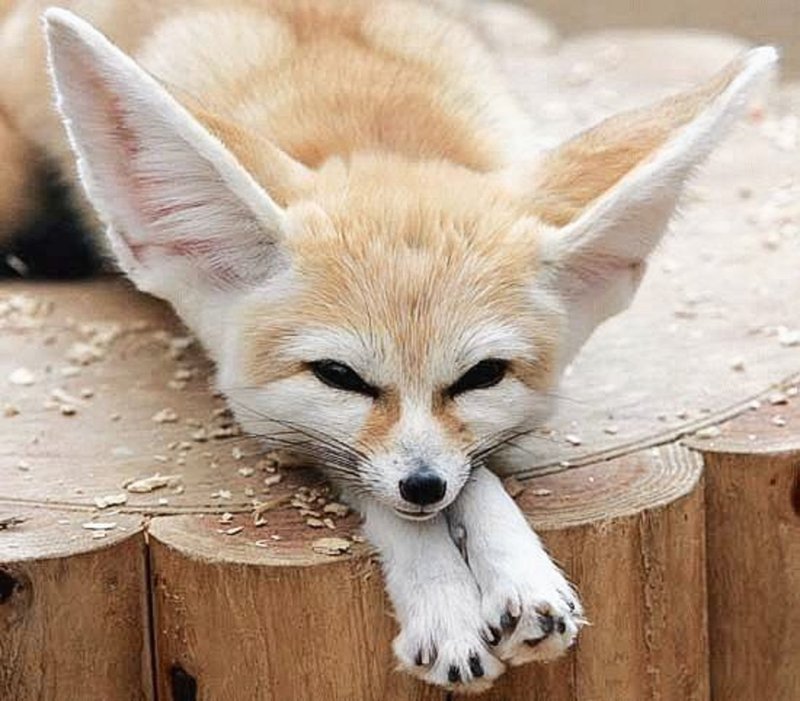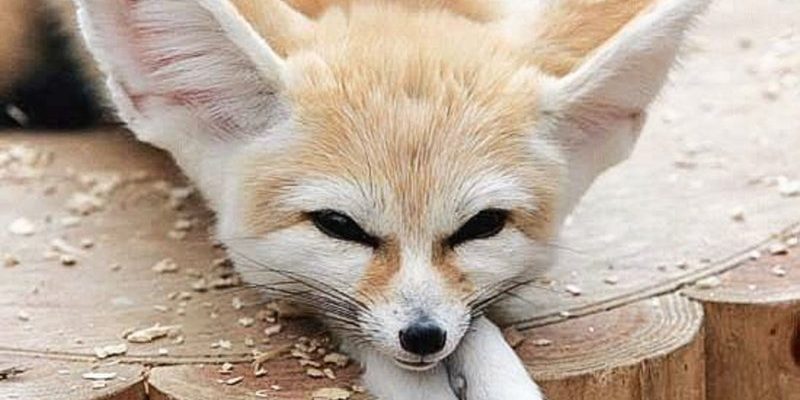
There’s something enchanting about the fennec fox. With their adorable looks and playful demeanor, it’s no wonder that they’ve captured the hearts of many. But behind their cute facade lies a wealth of intriguing traits and adaptations that help them thrive in harsh environments. Grab a seat and let’s explore the top ten fascinating facts about the fennec fox, unraveling the secrets of these captivating creatures.
1. They Have the Largest Ears of Any Fox
One of the most striking features of the fennec fox is its large ears. In fact, they are the largest ears relative to body size of any fox species! These ears can be as long as 6 inches! You might be wondering why they’re so big. Well, their massive ears play a dual role: they help them to hear prey that might be burrowing underground and also act as a way to dissipate heat in their hot desert habitat.
Imagine sitting in a desert during the day, the sun beating down, and suddenly you hear a faint rustle—those big ears can pick up even the slightest sound! This makes the fennec fox an excellent hunter, able to locate small mammals and insects in the sand. It’s as if they’ve got built-in satellite dishes for sound!
2. They’re Masters of the Desert
Fennec foxes are perfectly adapted to life in the desert. They have sandy-colored fur that blends in seamlessly with their surroundings, which helps them avoid predators. Their thick fur also insulates them from both the scorching heat during the day and chilly nights.
Here’s the thing: they have special padded feet that protect them from the hot sand. It’s like wearing natural boots! Their footpads also prevent them from sinking into the soft ground, allowing them to move quickly and easily across the dunes. These adaptations make the fennec fox truly a marvel of evolution, well-suited to thrive in an environment that many would find inhospitable.
3. They Can Go Without Water
You might find it hard to believe, but fennec foxes can go for long periods without drinking water. Instead, they get the hydration they need from the food they eat, like insects and small rodents which contain moisture. This ability is crucial for survival in their arid habitat, where water sources are scarce.
Think about it: while most animals need to drink regularly, the fennec fox has figured out a way to adapt to their dry surroundings. They have also developed a unique way of keeping cool by being nocturnal. This means they are active at night when temperatures drop, instead of during the hot days when finding water would be much more challenging.
4. Social Creatures with Unique Calls
Fennec foxes are not lone hunters. They live in family groups, often consisting of a pair with their young. They communicate using a variety of sounds, ranging from barks and whines to howls and growls. Their vocalizations are fascinating to listen to, almost like a mini orchestra of desert sounds!
If you ever get a chance to hear them, you might find their calls oddly reminiscent of a bird chirping. They use these sounds to maintain contact with each other, warn of dangers, or signal a change in activity. This social aspect adds to their charm and highlights their behavior as more than just survival-driven.
5. Unique Feeding Habits
What do fennec foxes eat? Their diet is quite varied. They primarily feast on insects, but they also enjoy small mammals, birds, and even fruits. What’s unique about their eating habits is how opportunistic they can be. If there’s food available, they’ll happily dive into it.
They have sharp teeth that allow them to catch prey easily, and their keen sense of hearing helps them locate their next meal. Sometimes, watching a fennec fox hunt can be quite a sight; they dig swiftly in the sand, using their paws to uncover a hidden snack. It’s a little reminder that every meal is a bit of a treasure hunt in the wild!
6. Super Cute, But Not Pets!
While fennec foxes might look adorable, it’s essential to remember that they are wild animals. Keeping one as a pet might sound tempting, but these creatures have very specific needs that are hard to replicate in a home environment. They thrive in the wild, where they can express their natural behaviors.
Responsible ownership involves understanding their needs for space, diet, and social interaction. Fennec foxes are best appreciated in their natural habitat or in wildlife reserves, where they can live freely and happily. It’s always best to admire them from afar—kind of like watching a charming documentary!
7. They Have a Short Lifespan in the Wild
In the wild, fennec foxes typically live around 10–12 years. However, when cared for in captivity, they can live longer—sometimes up to 14 years or more. Their life in the wild might seem short, but it’s filled with challenges, from finding food to avoiding predators.
The harsh realities of desert life can take a toll on their lifespan. Predators like birds of prey or larger mammals pose constant threats. Their lifespan, while not particularly long, is a testament to their resilience and adaptability in a challenging environment.
8. They Are Exceptional Burrowers
Fennec foxes are renowned for their digging abilities. They create elaborate burrows in the sand, which serve as homes and shelter from the desert heat. These burrows can be several feet deep, providing a cool retreat during the hottest parts of the day.
Their burrows are not just simple holes; they often have multiple entrances and chambers. This complexity allows them to escape quickly if a predator comes too close. It’s like having a secret underground hideout—how cool is that? These burrows also help them maintain stable temperatures despite the extreme fluctuations above ground.
9. They Are Not Endangered But Face Threats
Fortunately, fennec foxes aren’t currently classified as endangered. Their populations are relatively stable across their range in North Africa. However, they do face threats from habitat loss due to human expansion and the illegal pet trade.
Conservation efforts are crucial to ensuring that their natural habitats remain safe and intact. It’s a reminder that while many species are at risk, others require ongoing protection to thrive. By supporting wildlife conservation organizations, you can help protect these remarkable animals and their environments.
10. Fennec Foxes in Popular Culture
If you’ve ever seen them in movies or shows, you know that fennec foxes have made quite an impact on popular culture. Their unique appearance often makes them a favorite in animation and storytelling, charming audiences young and old alike.
You might recognize them in cartoons or even video games. Their playful personality and quirky looks make them ideal characters for creative storytelling. This pop culture presence not only entertains but also raises awareness about the species, encouraging more people to learn about their unique traits and habitats.
In conclusion, fennec foxes are more than just cute animals; they are incredible survivors of the desert, equipped with unique adaptations and behaviors that allow them to thrive in a challenging environment. From their impressive ears to their fascinating social structures, these little foxes remind us of nature’s ingenuity. So, the next time you hear about a fennec fox, you’ll know just how extraordinary they truly are!

